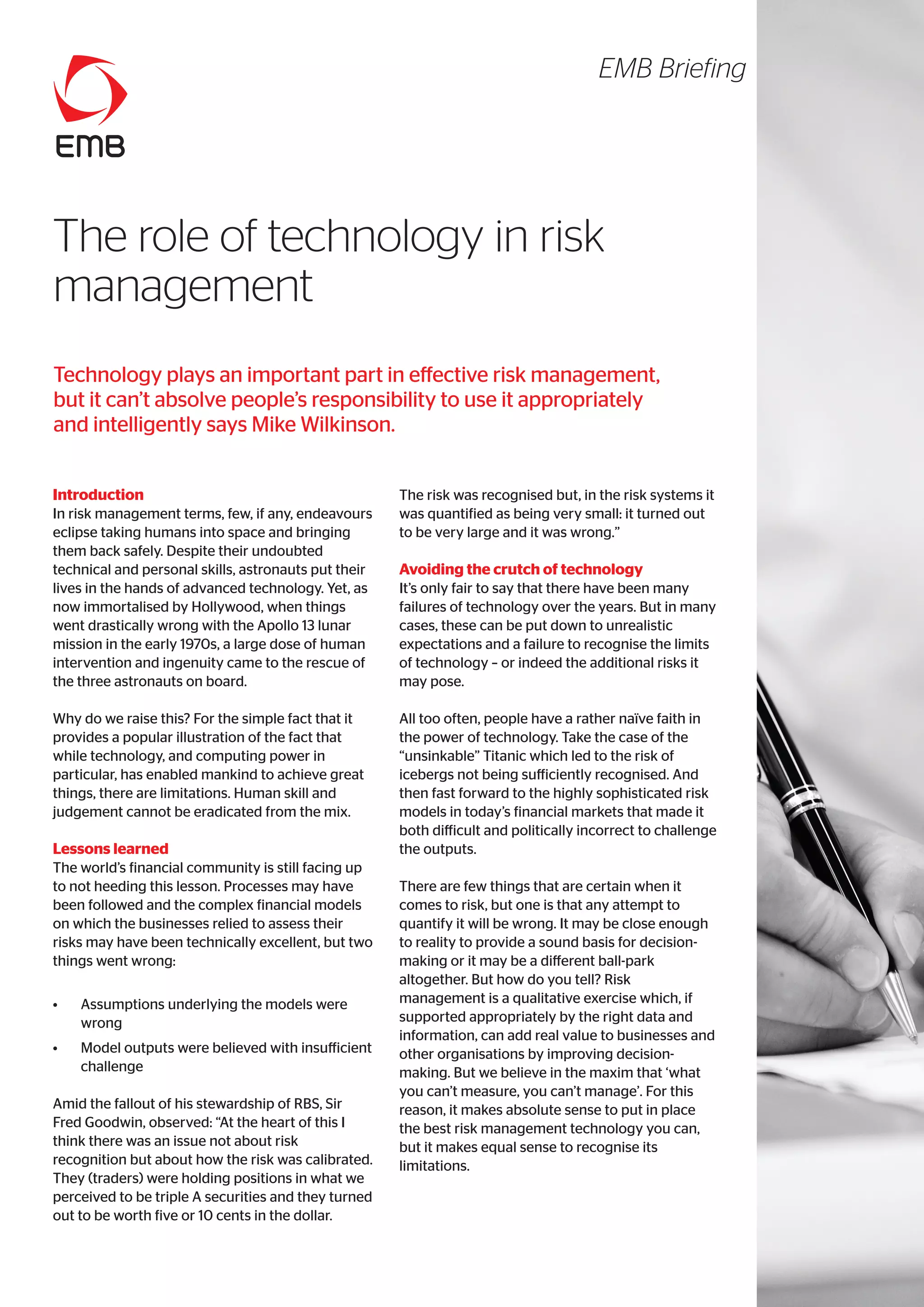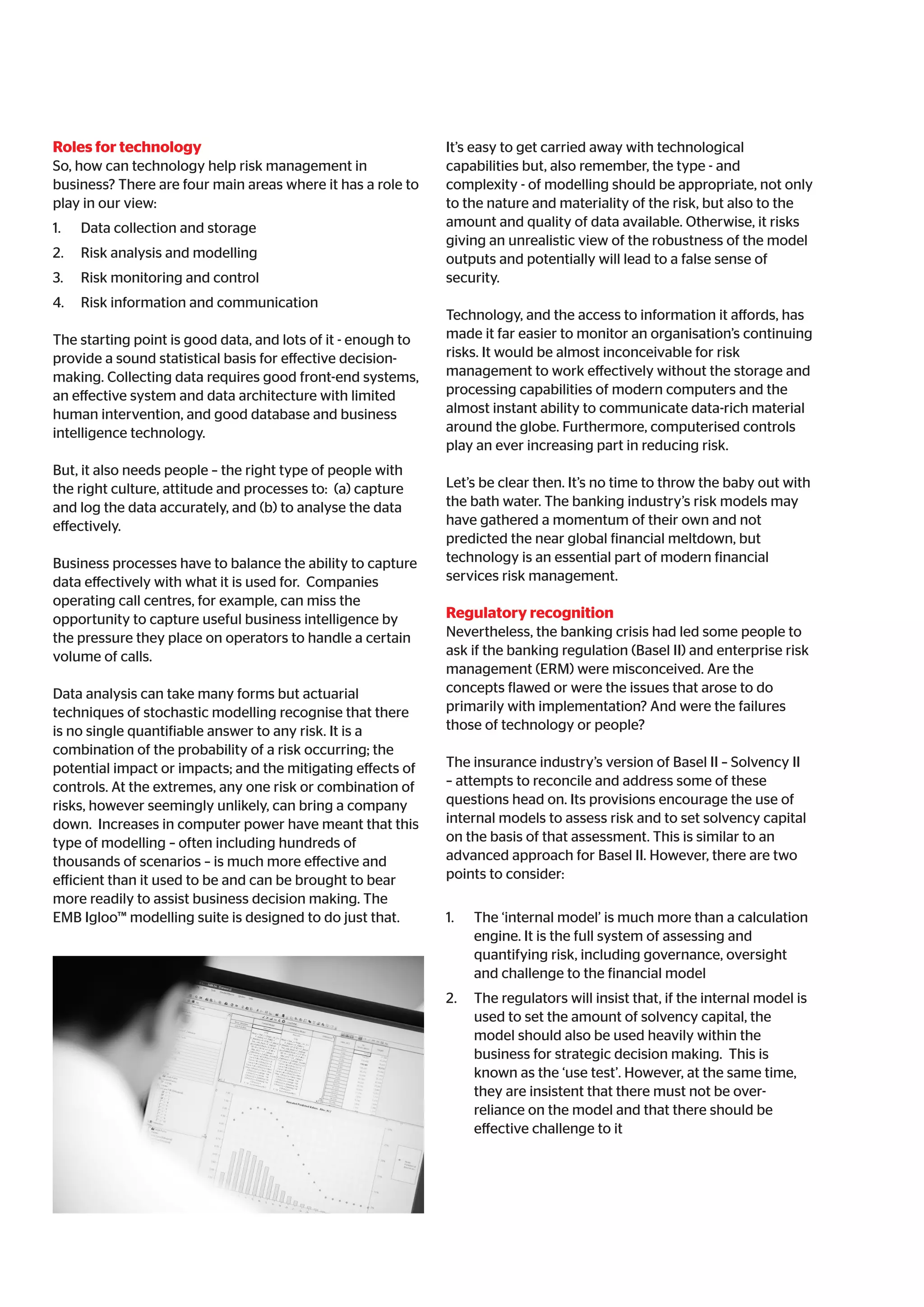The document discusses the limitations of technology in risk management based on past failures, such as the financial crisis. While technology plays an important role in areas like data collection, analysis, and monitoring, it cannot replace human judgment and challenge. Risk models can be wrong or lead to a false sense of security if people rely on them without questioning the assumptions. The key is using technology as a tool alongside qualitative risk assessment to improve decision-making.



